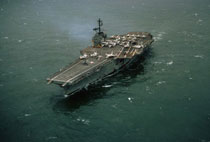 |
| Sen. Jeff Merkley, Oregon |
Senator Jeff Merkley (Oregon) yesterday joined with Senator Richard Burr (North Carolina) extending a bipartisan invitation to the VA to once again brief Congress on why the VA is so adamant on preventing legitimate C-123 veterans' Agent Orange exposure claims.
(late note 12/12/12: the meeting was fruitless with the VA continuing to insist no C-123 veterans will be cared for. A letter from ten scientists and five physicians supporting C-123 veterans' claims was dismissed by VA on the basis that no claims will ever be approved regardless of justification.)
 |
| Sen. Richard Burr, North Carolina |
They'll need your help to make it clear this important veterans issue isn't going away. Mr. William White of Senator Merkley's DC office works veterans affairs, and he's asked each of us C-123 veterans to contact our own senator's veterans affairs staffer to ask that they join the meeting.
Easy. Just call your senators' and congressman's local offices, ask for the veterans affairs staffer, and pass along the invitation from Will White...tell them to contact Mr. White in DC for the meeting time and place, and you're done. Of course, you might want to follow up after the meeting to
"encourage" your senator to continue pressing the VA for action! It would also be superb if you were to "educate" your senator's staff about the C-123 exposure issue, and I've prepared the
C-123 Agent Orange briefing for them which you can download by clicking HERE.
The 1994
Air Force testing on Patches labeled it "heavily contaminated" on all test surfaces, and "extremely dangerous." Alarming words certainly bad enough to get our attention, and they did! And that's what the inspectors meant so the aircraft was immediately quarantined from all personnel access...not just restoration workers.We correctly understood that if
Patches was
extremely dangerous when the tests were done in 1994,
Patches and her sister C-123s were certainly
extremely dangerous when we flew them 1972-1982! And, of course, tests over the next many years continued to confirm these as "a danger to public health" until they were all destroyed in 2010 as toxic waste. So the Air Force's 2012 report was supposed to set the record straight.
Ah, but enter politics, replacing science! The
Air Force's 2012 reexamination of C-123 records led them to dismiss the recommendations of the toxicologists who examined Patches, using as an excuse the pretense that the recommendations must have been meant for AF Museum restoration workers only, not to personnel in general. They listed the types of chores the museum restoration workers were likely to perform and disturb Agent Orange residue and implied those tasks were different than what we did, so we couldn't have been affected by disturbing Agent Orange residue.
And the
base chief of safety even required the aircraft be opened and aired out for two full days to vent dioxin in the air before personnel entry...anybody remember us doing that at Westover? I don't!
Horse feathers! We did those restoration workers' chores and much more. We did them, not for the days or weeks a restoration effort might require, but for
years upon years, and we certainly were exposed thereby to the deadly TCDD component of Agent Orange. Several of our veterans have submitted sworn statements to that fact, and we need
more...especially from squadron commanders and NCOICs!
Download the statement here and, if you are in agreement, sign and return to me by scanning it (if possible) or snail mail.







_Signed-1.jpg)











